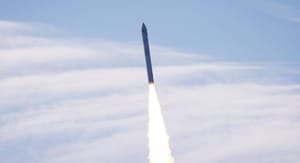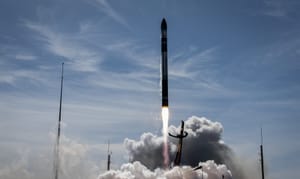
Early in the morning on the 21st of October, India performed a launch abort test of the escape system for its Gaganyaan crew capsule.
The mission had the capsule perform an abort 11.7 kilometers up at 889 miles per hour where it seperated from the booster. Gaganyaan's launch escape system carried the capsule up to 17 kilometers where it was released at a speed of 370 miles per hour. After deploying its drogue chutes and then main parachutes the capsule splashed down roughly 10 kilometers from its launch site, the Satish Dhawan Space Centre.
Currently the Indian Space Research Organisation has declared the test a success.

What is Gaganyaan?
Gaganyaan is a crewed spacecraft currently in development by the Indian Space Research Organisation, Hindustan Aeronautics Limited, and the Defence Research and Development Organisation.
Gaganyaan has so far conducted three tests in its development; a re-entry test on a suborbital spaceflight with a boilerplate spacecraft, a pad abort test, and drogue parachute development tests. TV-D1 is the fourth and a critical step for the safety of the spacecraft. Crewed flights are currently aimed for 2025.

The Indian Space Research Organisation claims Gaganyaan will be able to carry three crew members for seven days of free flight. In its current design, the spacecraft weighs 3,735 kilograms dry and 8,200 kilograms prepped for launch. Gaganyaan currently has an internal volume of eight cubic meters.
The design of Gaganyaan is similar to SpaceX's Crew Dragon and has its crew module riding atop of the service module. However, Gaganyaan has the propulsion in the service module, unlike Crew Dragon.
Indian Human spaceflight goals
The Prime Minister of India announced new goals for Indian spaceflight in that it should have a space station in low Earth orbit by 2035 and send an Indian to the Moon by 2040! A quote from the Indian Prime Minister's Office lays out the goals as follows;
"Building on the success of the Indian space initiatives, including the recent Chandrayan-3 and Aditya L1 Missions, Prime Minister directed that India should now aim for new and ambitious goals, including setting up ‘Bharatiya Antariksha Station’ (Indian Space Station) by 2035 and sending first Indian to the Moon by 2040." – "To realize this Vision, the Department of Space will develop a roadmap for Moon exploration. This will encompass a series of Chandrayaan missions, the development of a Next Generation Launch Vehicle (NGLV), construction of a new launch pad, setting up human-centric Laboratories and associated technologies."



